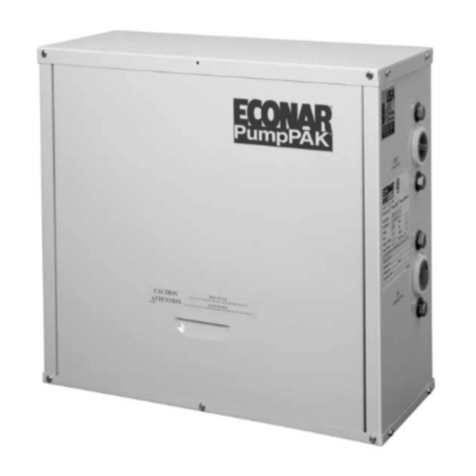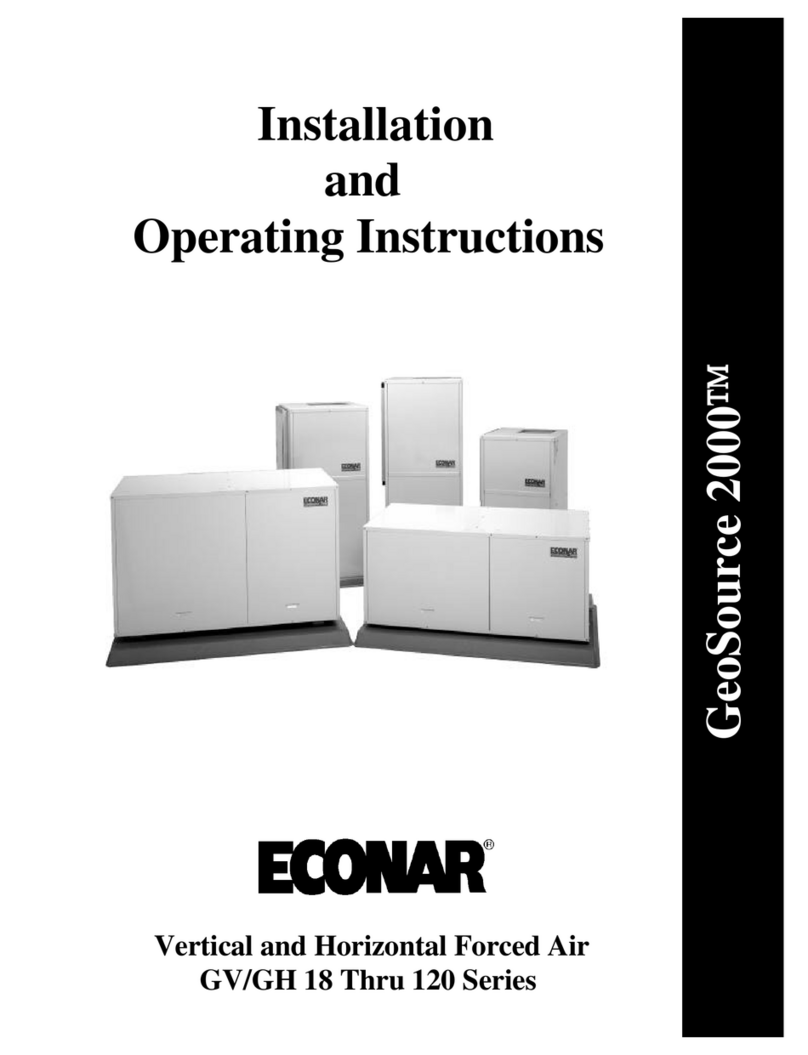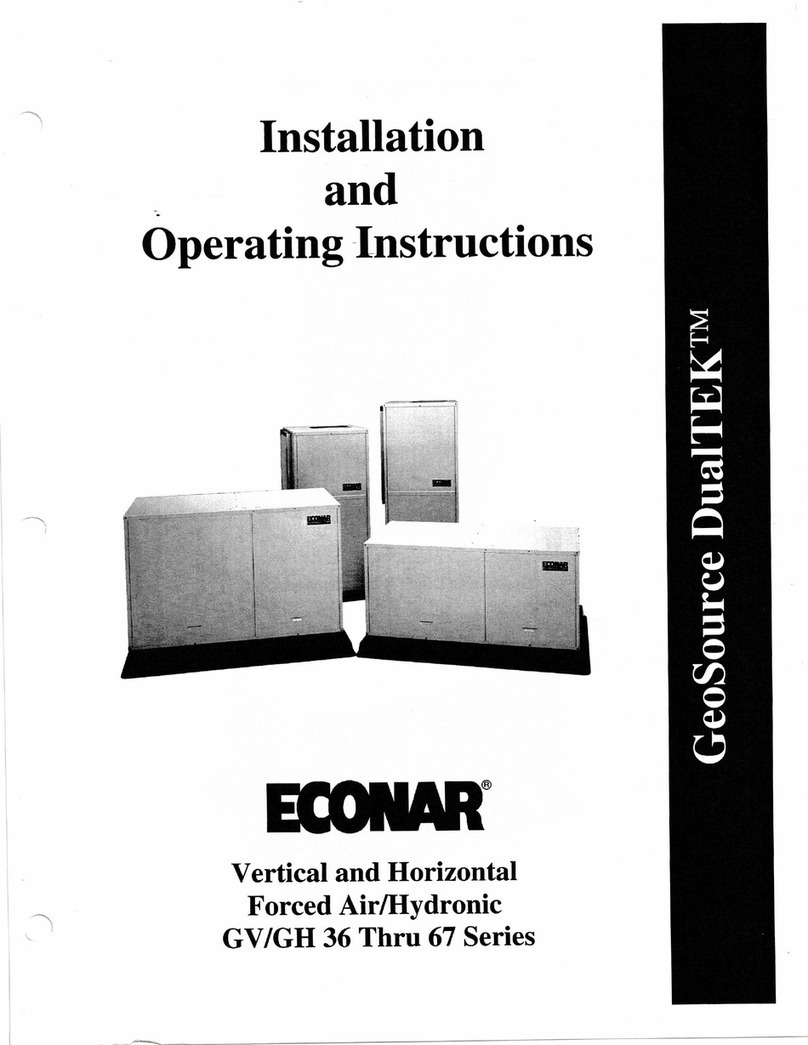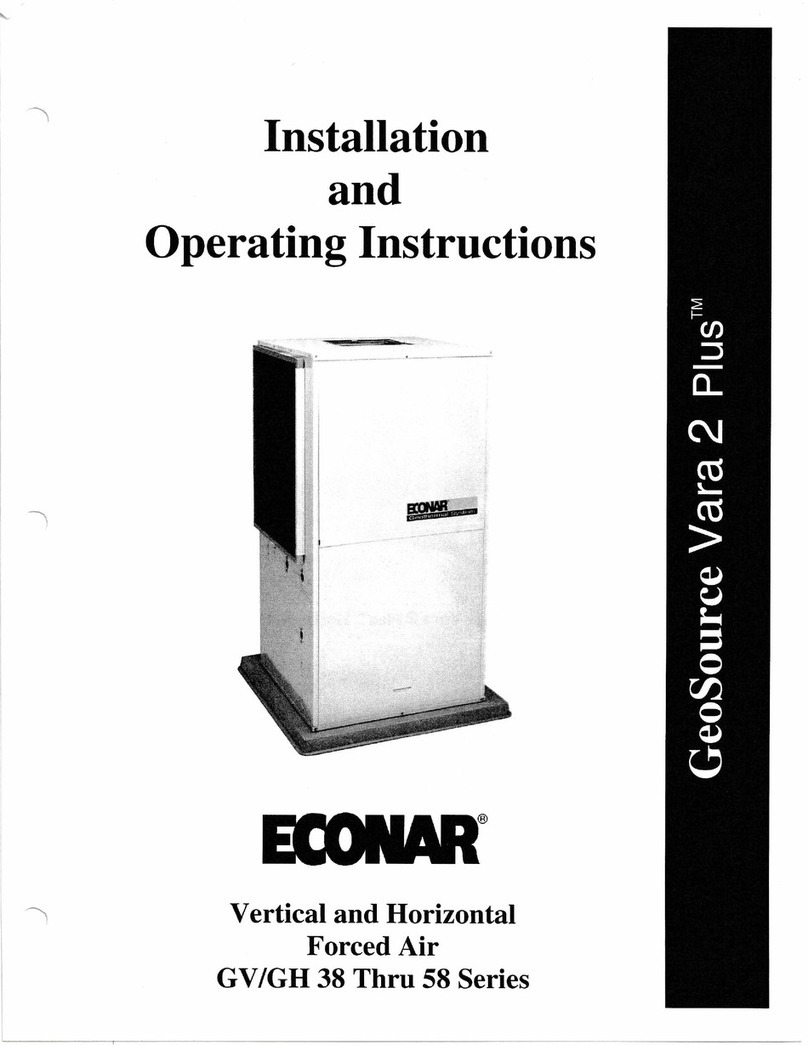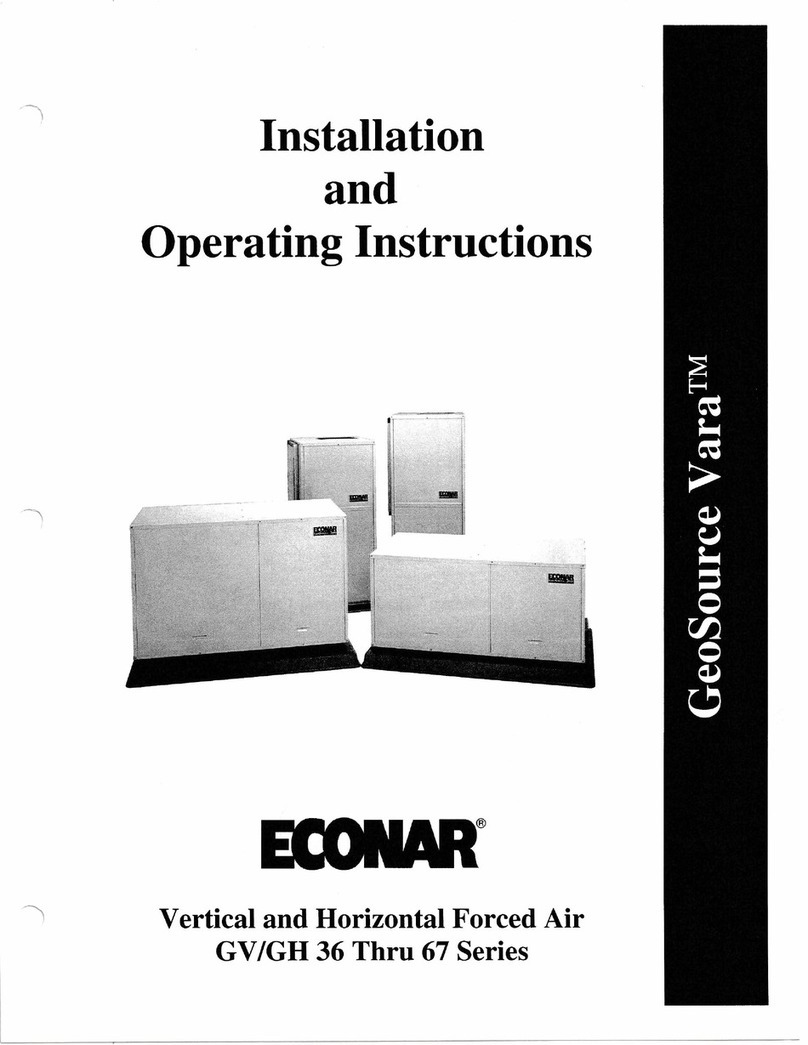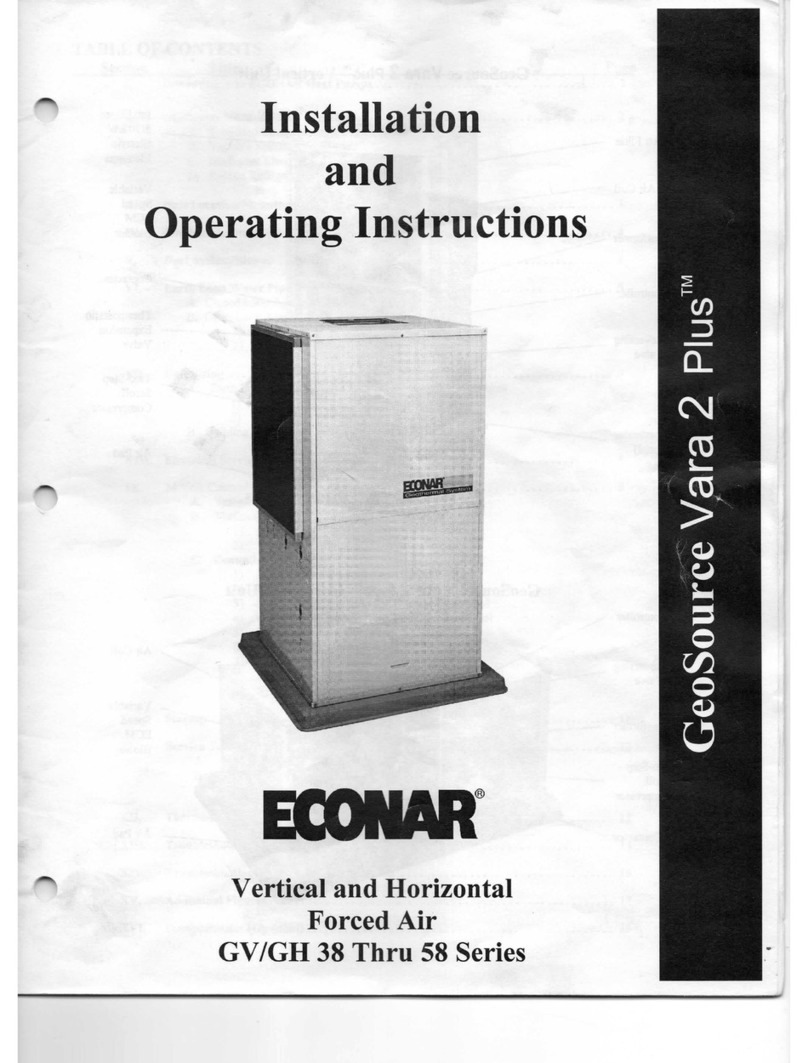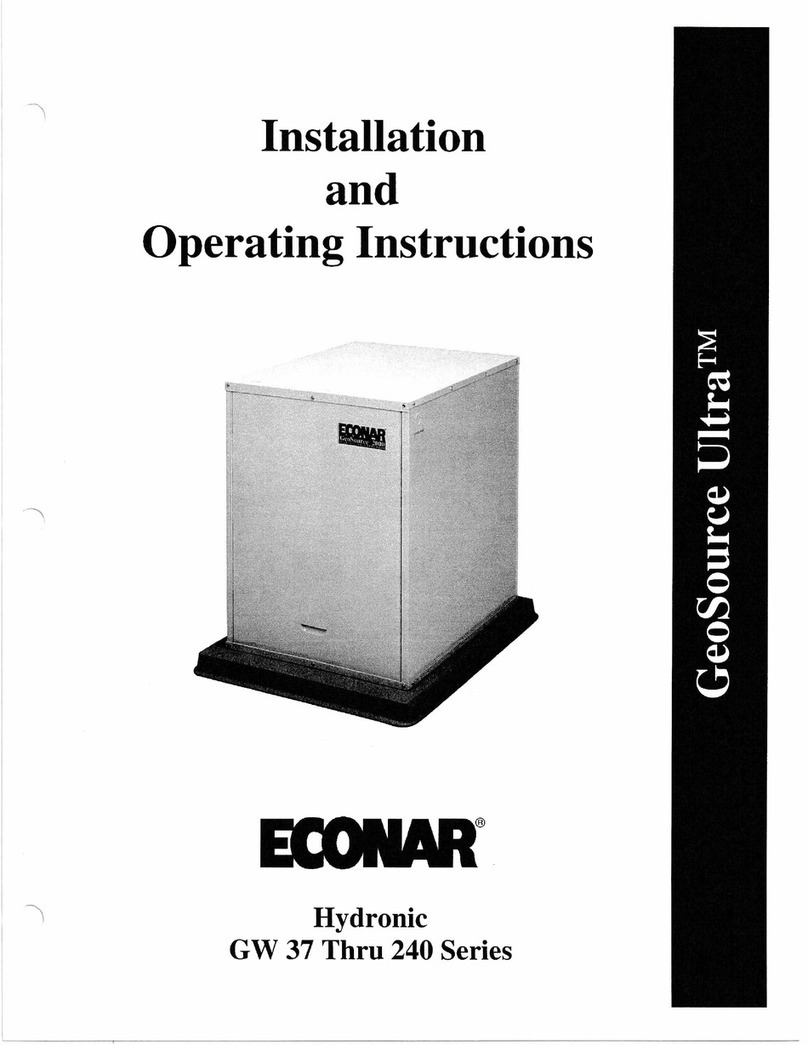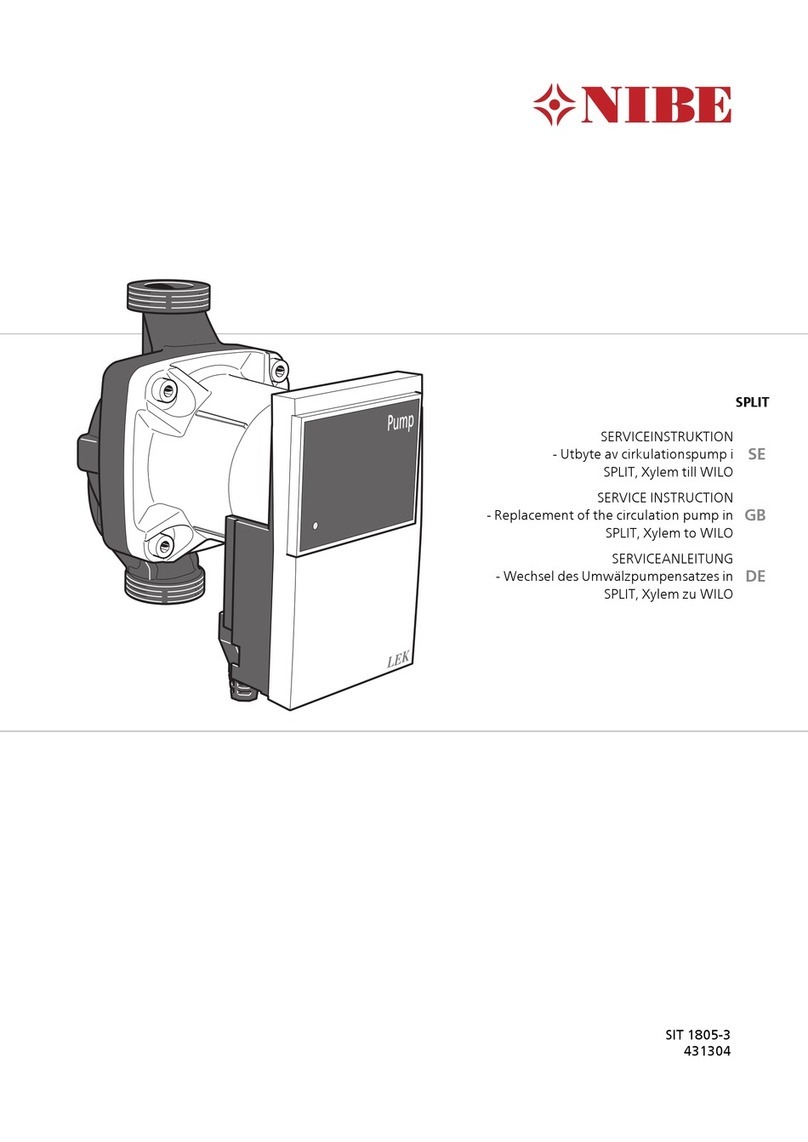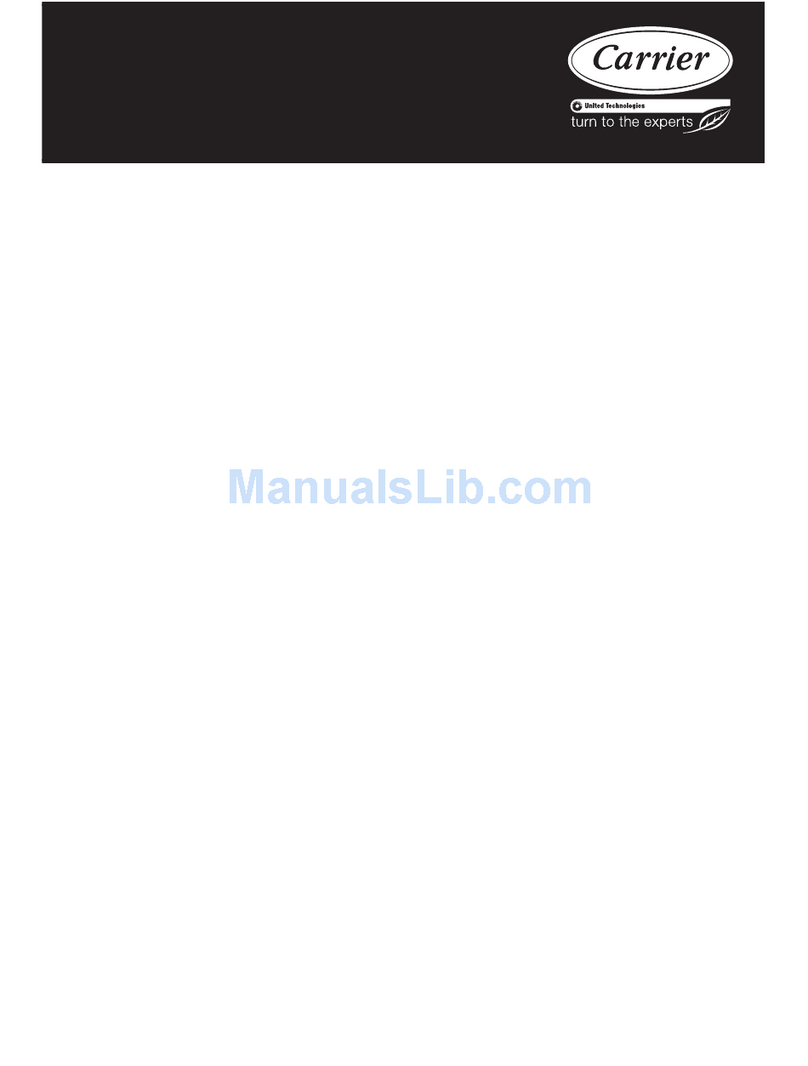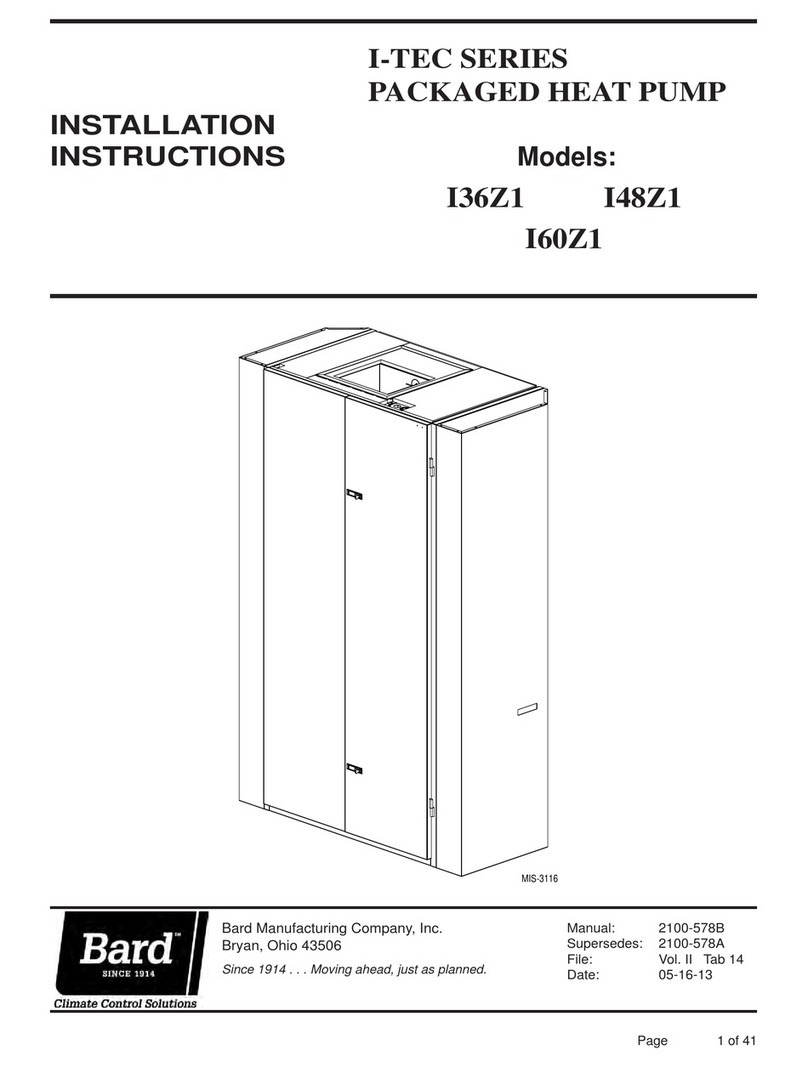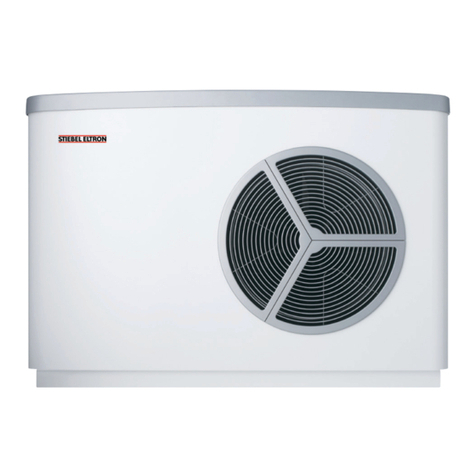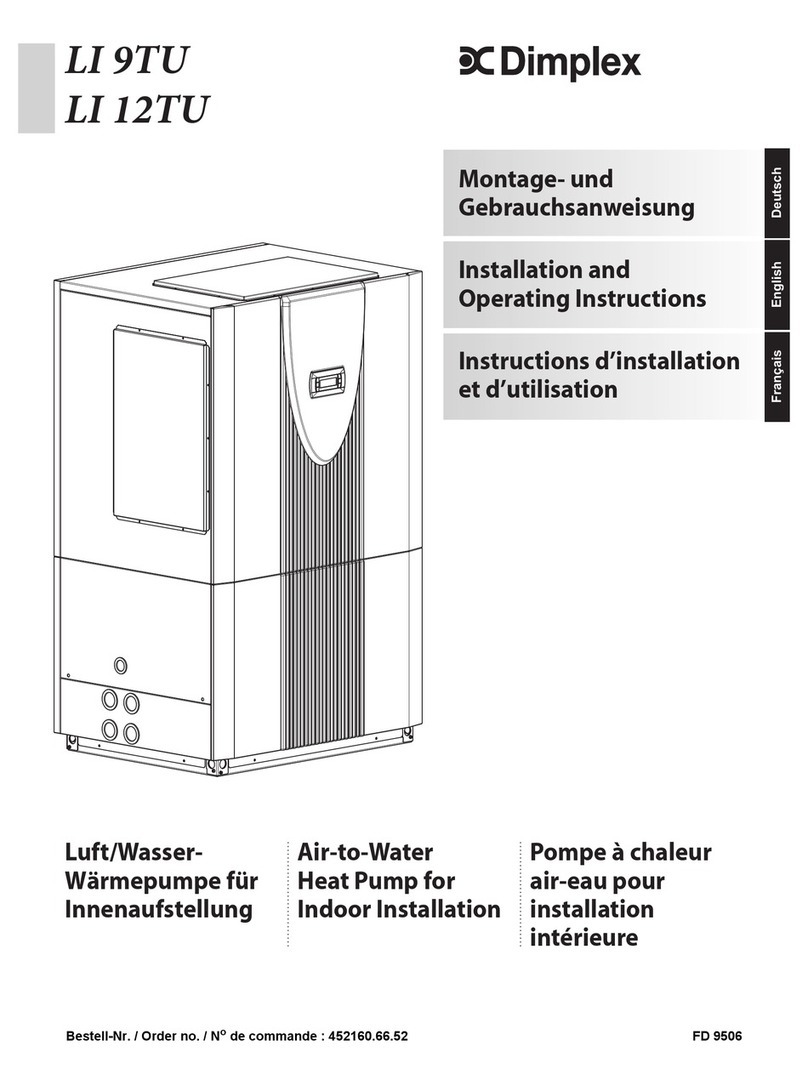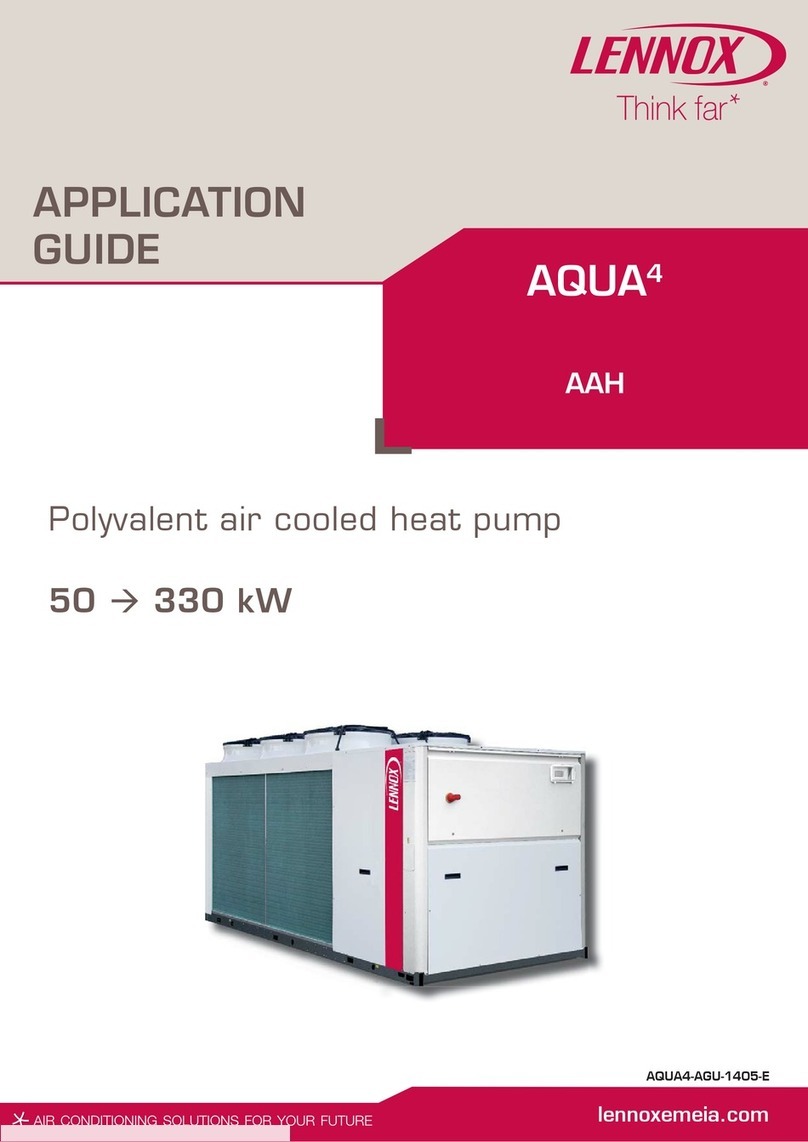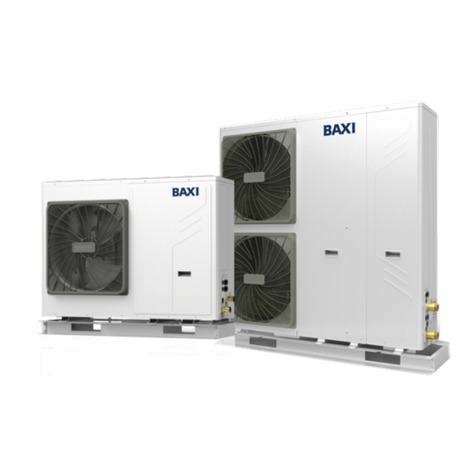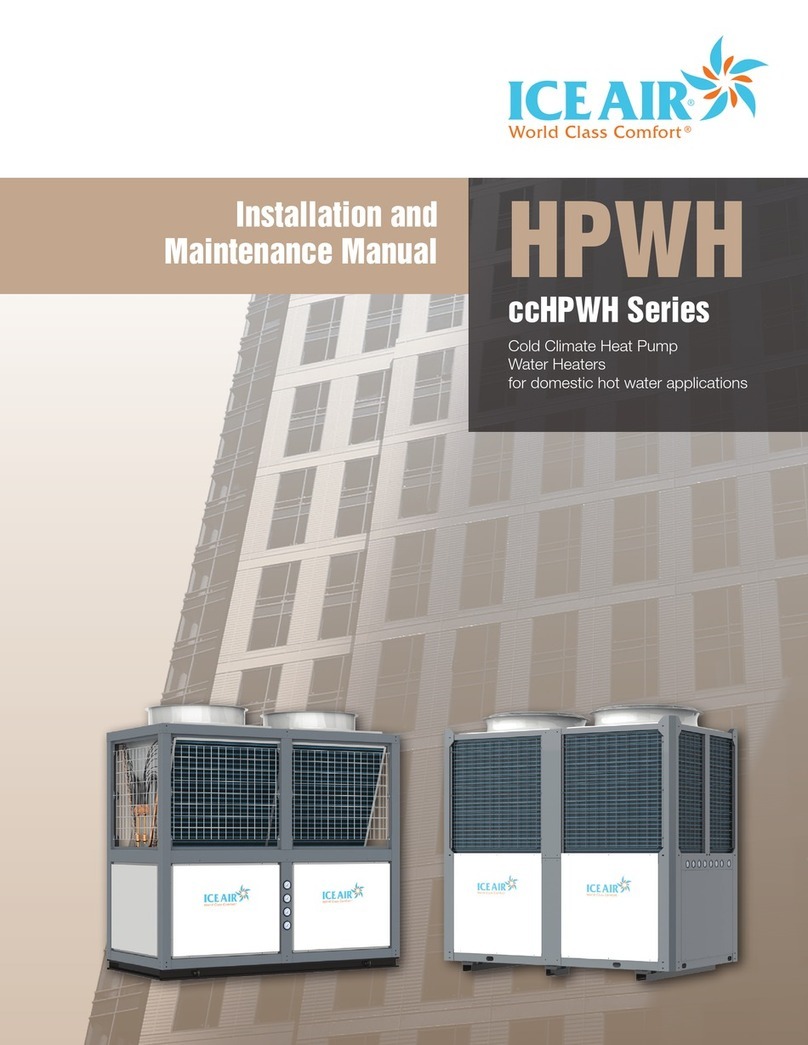
earth loop water temperatures. Typical electric hot water
heaters supply 16,720 Btu/hr (4.9 kwhr) of capacity.
The heat pump heats the DHW by circulating the water
from the storage tank through a double-walled,
refrigerant-to-water condenser coil. When the
temperature of the water in the storage tank drops below a
reset point of 113"F, a pump, built into the heat pump,
circulates the water and the number two compressor
starts. The compressor continues to run, heating the
DHW, until the water reaches 1l9oF. The DHW pump is
controlled to run continuously only when the compressor
is activated in DHW mode. This pump will also run for a
one minute sampling period every seven minutes to
continuously sample the tank's water temperature and
bring the compressor on at the correct times. The tank
temperature is controlled with a simple temperature
sensor mounted on a copper pipe inside the heat pump.
The minimum entering water temperature on the DHW
side (water in the storage tank) is 50oF. Startup on the
system with colder water will require restricting flow to
the unit until tank temperatures rise. A maximum DHW
tank temperature of 126oF is also specified to keep the
system from locking out on high head pressure. Figure 4
shows the required plumbing to connect the system.
Figure 5 shows an example of a plumbing circuit for a
-DWR unit that has enough capacity for both domestic
hot water and radiant floor heating. Figure 6 shows a
plumbing circuit for a -DWR unit that is sized to full
capacity for radiant floor heating. With this setup, the
-DWR unit can provide supplemental domestic hot water
to an additional water heater when the radiant floor is not
utilizing the full load. Reduced flow rates and increased
leaving water temperatures can lock the DHW circuit out
on rhe high pressure switch, so follow the plumbing
dia-eram closely.
of 30 gallons is required; normally a 50 to 80 gallon tank
would be used.
When installing a GeoSource Invision3 with the -DWR
option, use an indirectly fired water heater as a storage
tank (shown in Figures 5 and 6).
The electric elements can be left in and wired to provide
backup water heating ability, but be sure to leave the
circuit breaker off during normal operation, so that it does
not interfere with tank temperatures.
€Note: While all hot water tanks are insulated on the top
and sides, many do not have insulation on the bottom" An
insulated pad beneath uninsulated tanks will reduce
ener-qy loss to the floor.
Always check local codes to be sure hot water tanks can
be used for this purpose.
2. DHW Pump
The DHW pump transfers the energy supplied by the
GeoSource Invision'heat pump to the storage tank. This
pump is impedance protected and does not require
additional fusing. A two-amp inline fuse is supplied on
the pump for additional safety and for use as a shut off
switch.
This pump has been sized to provide the required flow to
the heat exchanger with a total system pressure drop of 2 1
feet ofhead. This pressure drop can be calculated from
the total pressure drop through *re piping, added to the
pressure drop of the heat pump of 15 feet of head. Figure
3 shows the pump curve of the DHW pump. The pump
can provide 8 GPM at 2l feetof head. Using one inch
copper pipe is critical to maintain the proper flow. The
remaining six feet of head is equivalent to 100 feet of one
inch type L copper tubing or a combination of straight
pipe and fittings. If extremely long distances separate the
heat pump and storage tank, or ifadditional pressure drop
cannot be avoided, a booster pump must be added to the
plumbing system. For the most efficient operation, locate
the heat pump and storage tank as close together as
possible and insulate all water piping.
A common problem with circulator pumps is trapped air
in the system. This air accumulates in the suction port of
the circulator pump, causing cavitation in the pump. The
cavitation can stop the flow of water and leadio
premature pump failure and noisy operation. The air can
be eliminated by completely purging the system or by
placing an air separator in the plumbing lines.
The entire system must be purged of air during initial
installation. Normal systems will operate on iater supply
pressure, which keeps air from reentering the system. If a
system is not working on water supply pressure, maintain
110 to 30 psi static pressure to keep air out of the loop.
Otherwise, corrosion, bacteria growth, or pump cavitation
may occur.
An operating temperature range for the earth loop side of
the heat pump is also specified as follows:
- 20"F (minimum for heating)
- 100"F (maximum for cooling)
- 80"F (maximum for -DHW and -DWR option)
These limits have been established based on efficiency
limitations and safety pressure switch limits (50_psi low_
pressure curout and 580 psi high-pressure cutout). DHW
operation is limited to 80nF because at this warm of a
source temperature, the heating capacity increases to the
point of overloading the water-cooled condenser, tripping
the system offon high head pressure.
eNote: After all plumbing and purging of the circuit
is complete; MOVE DIp SWITCH #4, Iocated on the
controller, to the ON position to initiate DHW
operation. Allowing the pump to run dry will damage
the circulating pump and overheat the motor.
1. Storage Tanks
Insulated electric hot water heaters are used for storage
tanks for the DHW circuit of the heat pump. A minimum
3




















